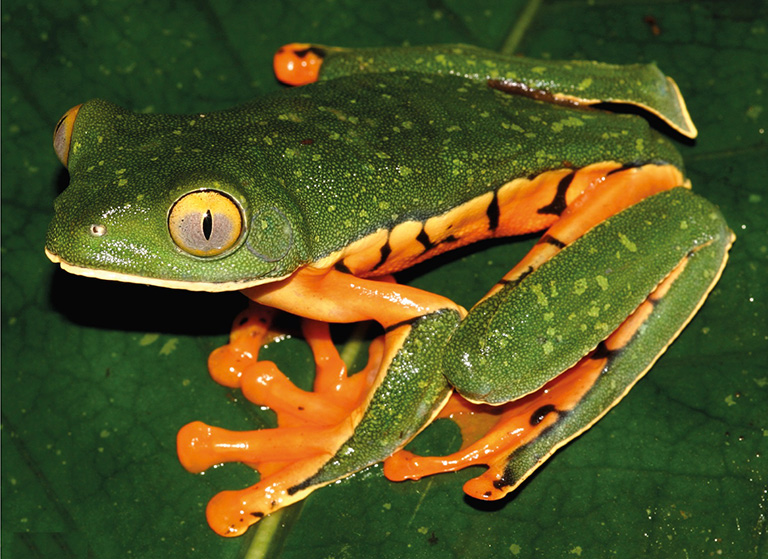- A researcher has identified a colorful tree frog as a new species.
- Andrew Gray, Curator of Herpetology at Manchester Museum, conducted genetic and biochemical analysis on frogs that were thought to be a morph of Cruziohyla calcarifer.
- His research, published in the journal Zootaxa, showed that individuals collected from Panama and northern South America are genetically distinct.
- He named the new amphibian Sylvia’s Tree Frog, Cruziohyla sylviae, after his 3-year-old granddaughter.
A researcher has identified a colorful tree frog as a new species and named the amphibian Sylvia’s tree frog, Cruziohyla sylviae, after his 3-year-old granddaughter.
Andrew Gray, Curator of Herpetology at Manchester Museum, conducted genetic and biochemical analysis on frogs that were thought to be a morph of the splendid tree frog, Cruziohyla calcarifer, a frog that’s popular among herp collectors for its striking coloration. His research, published in the journal Zootaxa, showed that individuals collected from Panama and northern South America are genetically distinct from individuals found in Costa Rica, indicating that the splendid tree frog is actually at least two species.
The new species is more closely related to the fringed tree frog, Cruziohyla craspedopus, which lives in the Amazon rainforest and was only described by science in 1957, than Cruziohyla calcarifer, which was first described in 1902.



Gray says the new species is not well documented in the wild and may be under threat.
“It’s remarkable that such a distinctive new species has remained undetected for such a long time,” he said in a statement. “However, more importantly, this work highlights that an assessment of the conservation needs for each species is urgently required to ensure these amazing creatures are still around in another 100 years.”

Citation:
- ANDREW R. GRAY (2018). Review of the genus Cruziohyla (Anura: Phyllomedusidae), with description of a new species. ZooTaxa Vol 4450, No 4. DOI: http://dx.doi.org/10.11646/zootaxa.4450.4.1
